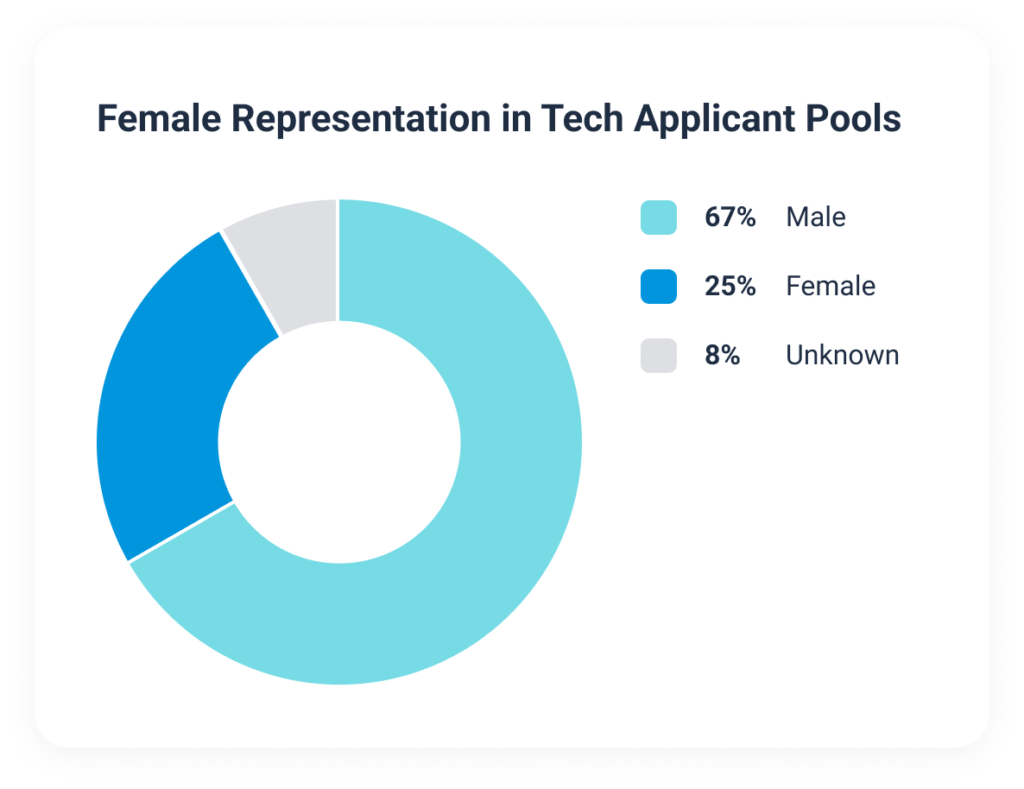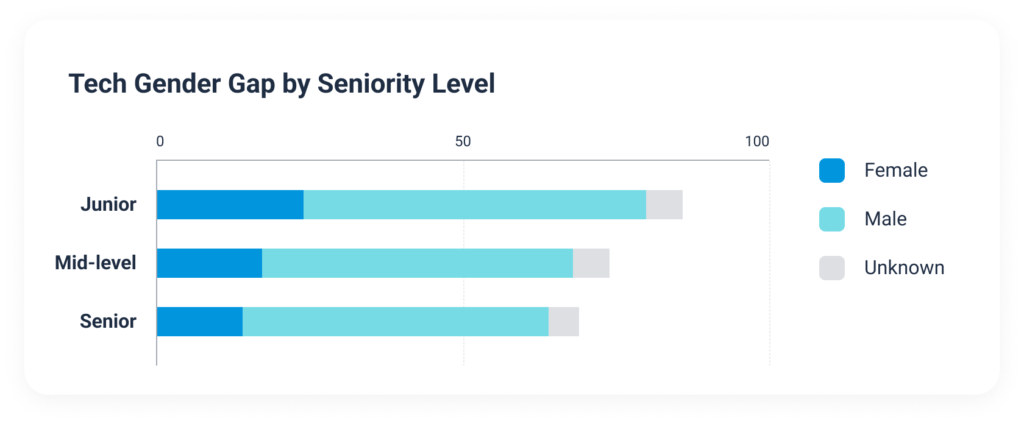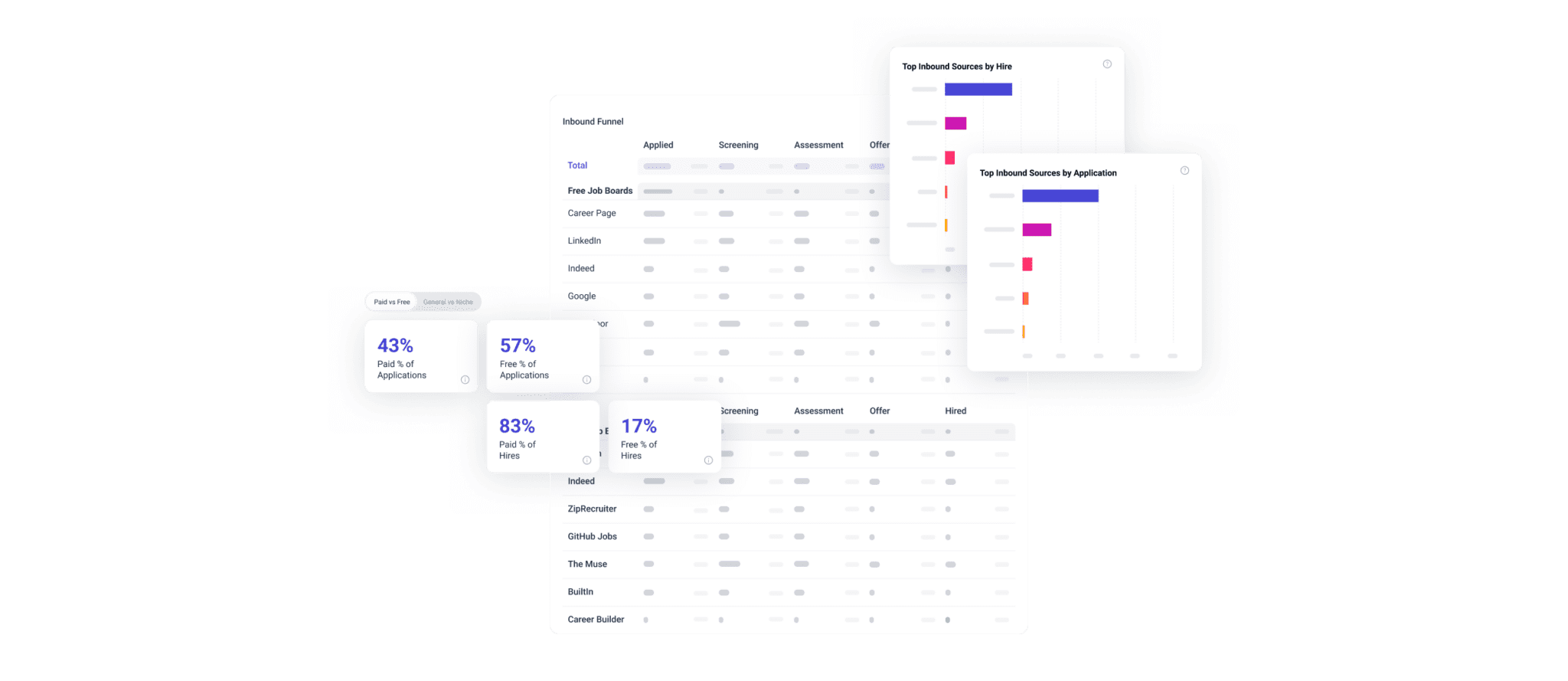It’s no secret that women in tech face obstacles, given that it’s a historically male-dominated industry. Pay inequality (that gets exacerbated any time a woman leaves the workforce) is one. Getting through the door is another, as low female representation in tech applicant pools clearly shows. But it may surprise you to learn that the employment gender gap gets wider with seniority.
Put simply, our data shows that applicant pools for tech jobs at the highest levels have diminished female representation over the last few years.
These days, women are earning the majority of college degrees. They are, generally speaking, better educated than their male counterparts. Yet they still earn less than men and have lower overall employment rates than men. This is the employment gender gap.
Female representation in tech job applicant pools is still low
According to Pew Research, women make up 50% of all workers in STEM (Science, Technology, Engineering, and Mathematics). They also earned 53% of all STEM degrees in 2018. However, female representation in STEM jobs is uneven.
“The gender dynamics in STEM degree attainment mirror many of those seen across STEM job clusters,” reports Pew. “For instance, women earned 85% of the bachelor’s degrees in health-related fields but just 22% in engineering and 19% in computer science as of 2018.”
And while employers have worked to improve the representation of women in tech, applicant pools are still predominantly male.
Datapeople’s science team recently analyzed job post data from over 10,000 U.S.-based employers and found, among other recruiting trends, that men account for 67% of applicants to tech jobs. This despite women earning more than half of all STEM degrees.
Our data shows that women in tech aren’t represented proportionally in applicant pools. Software engineering pools, for example, only have 19% female representation. Meanwhile, information technology and technology infrastructure have even smaller percentages.
We found that applicant pools for cross-functional jobs like product management, project management, and data tend to have the highest female representation (about 63%). Also, pools for user interface/user experience (UI/UX) design, quality assurance (QA), and enterprise resource planning (ERP) have higher female representation (about 38%).

The employment gender gap gets wider with seniority
Here’s where things get worse. Men represent about 65% of applicant pools for junior jobs (typically requiring fewer than four years of experience). But they represent 72% of applicant pools for senior jobs (typically requiring more than 10 years of experience).
According to our data, female representation in tech job applicant pools is highest for junior jobs. It drops for mid-level jobs and then drops again for senior-level jobs.
For most software engineering jobs, female representation in applicant pools drops 25% between junior and mid-level jobs (four to 10 years of experience). For ERP, UI/UX design, and cross-functional jobs, female representation drops at the senior level.

Mind the employment gender gap, especially for senior jobs
It’s no secret that women face an employment gender gap, and it’s nothing new either. A century ago, female representation in the workforce was limited to lower-paying administrative jobs.
And while the Equal Pay Act of 1963 made pay discrimination illegal, to this day women generally earn less than their male counterparts. It’s not until just recently, in fact, that pay transparency laws have started making it easier to detect pay discrimination.
In the end, we still have a long way to go for women in tech. Our data shows big discrepancies between male and female representation in current tech job applicant pools. Especially for senior roles.
But there are several things hiring teams can do to address the employment gender gap. They can write inclusive job posts that avoid gendered language, corporate cliches, and the like. They can publish those posts on women-targeted job boards like Fairygodboss in addition to common job boards like Indeed. And they can give their inbound recruiting efforts a chance to work by waiting until they have at least 100 applicants.







